Have you ever wondered why your coffee tastes different depending on how it is brewed? The answer lies in the grind size.
The coffee grind size chart is a valuable tool that helps coffee enthusiasts achieve the perfect cup of coffee by determining the appropriate grind size for their brewing method. This chart categorizes grind sizes into six main categories: coarse, medium-coarse, medium, medium-fine, fine, and extra-fine. Each category corresponds to a specific brewing method, ensuring optimal flavor extraction and safety.
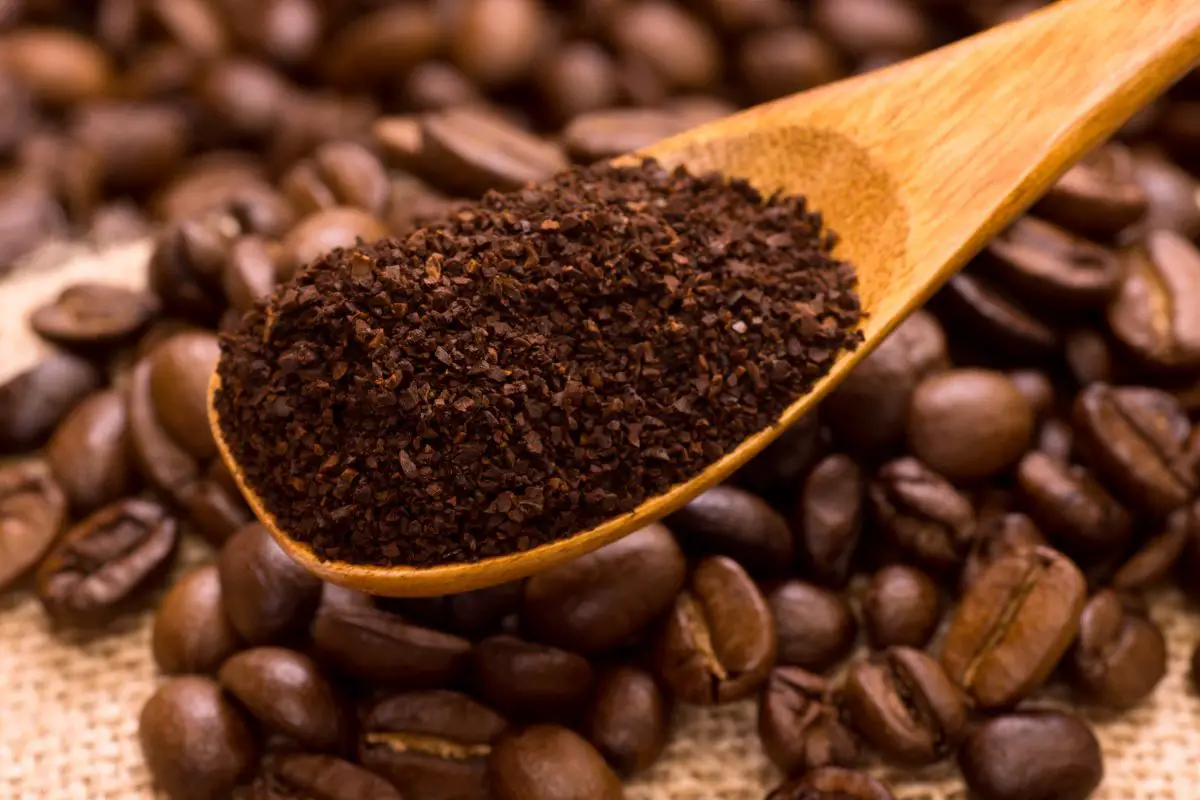
Understanding the importance of grind size is crucial for avoiding over-extraction or under-extraction, which can result in a bitter or weak cup of coffee.
By utilizing the coffee grind size chart, coffee lovers can confidently experiment with different brewing methods and find the perfect grind size to suit their preferences, ensuring a consistently delicious and safe cup of coffee every time.
Key Takeaways
- Coffee grind size chart categorizes grind sizes into coarse, medium-coarse, medium, medium-fine, fine, and extra-fine.
- Each grind size corresponds to a specific brewing method, ensuring optimal flavor extraction and safety.
- The grind size determines the overall taste and quality of the coffee.
- The grind size affects the flow of water through the coffee bed, controlling the extraction process.
Coarse Grind
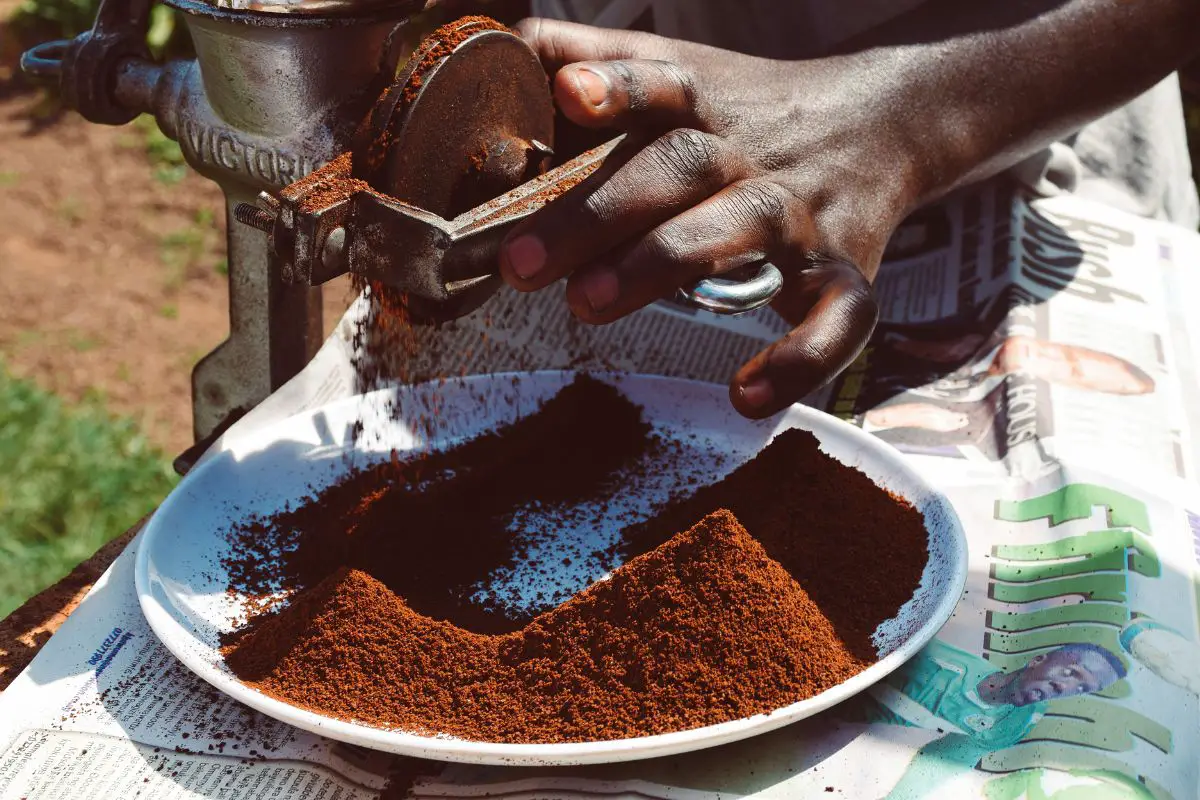
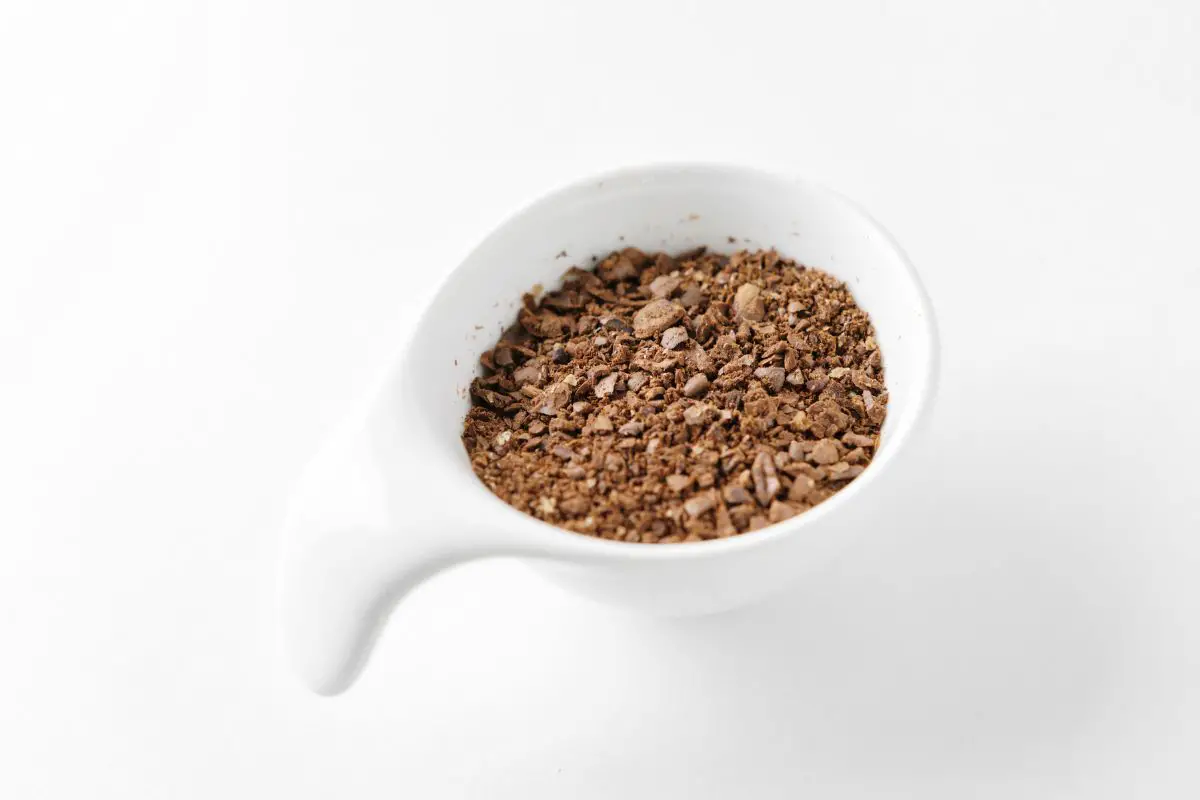
In the context of coffee brewing, a coarse grind refers to a grind size that is characterized by larger particles, typically used for methods such as French press or cold brew, where a longer extraction time is desired to extract flavors while minimizing the risk of over-extraction. When coffee beans are ground coarsely, they retain a larger particle size, allowing for a slower extraction process. This slower extraction time is advantageous as it prevents the coffee from becoming overly bitter or astringent.
Additionally, a coarse grind allows for better control over the extraction process, ensuring that the desired flavors are extracted without extracting undesirable compounds. A coarse grind is particularly suitable for French press brewing, where the coffee grounds are steeped in hot water for an extended period of time. The larger particles of a coarse grind facilitate the easy flow of water through the coffee, resulting in a full-bodied cup with a rich flavor profile. Similarly, cold brew methods benefit from a coarse grind as the extended steeping time in cold water ensures a smooth and less acidic brew.
Transitioning to the subsequent section about a medium-coarse grind, it is important to note that the grind size plays a crucial role in determining the overall taste and quality of the coffee.
Medium-Coarse Grind
A suitable grind for a pour-over method would be one that falls within the medium-coarse range. This grind size allows for a balanced extraction, where the coffee grounds are neither too fine nor too coarse. A medium-coarse grind provides a slower extraction rate, allowing for more control over the brewing process and ensuring a flavorful cup of coffee.
To better understand the grind size, refer to the following table:
| Grind Size | Description | Brewing Method |
|---|---|---|
| Coarse | Large particles with a noticeable texture | French Press |
| Medium-Coarse | Similar to coarse sand | Pour-over |
| Medium | Consistency of table salt | Drip Brew |
| Medium-Fine | Fine sand-like texture | Aeropress |
| Fine | Fine powder with a smooth texture | Espresso |
Choosing a medium-coarse grind for a pour-over method ensures that the water flows evenly through the coffee grounds, allowing for proper extraction and preventing over-extraction. The medium-coarse grind creates a balance between the flavors and acidity of the coffee, resulting in a smooth and well-rounded cup.
Transitioning into the subsequent section on medium grind, it is important to note that the grind size for a medium-coarse grind is slightly finer than that of a medium grind.
Medium Grind
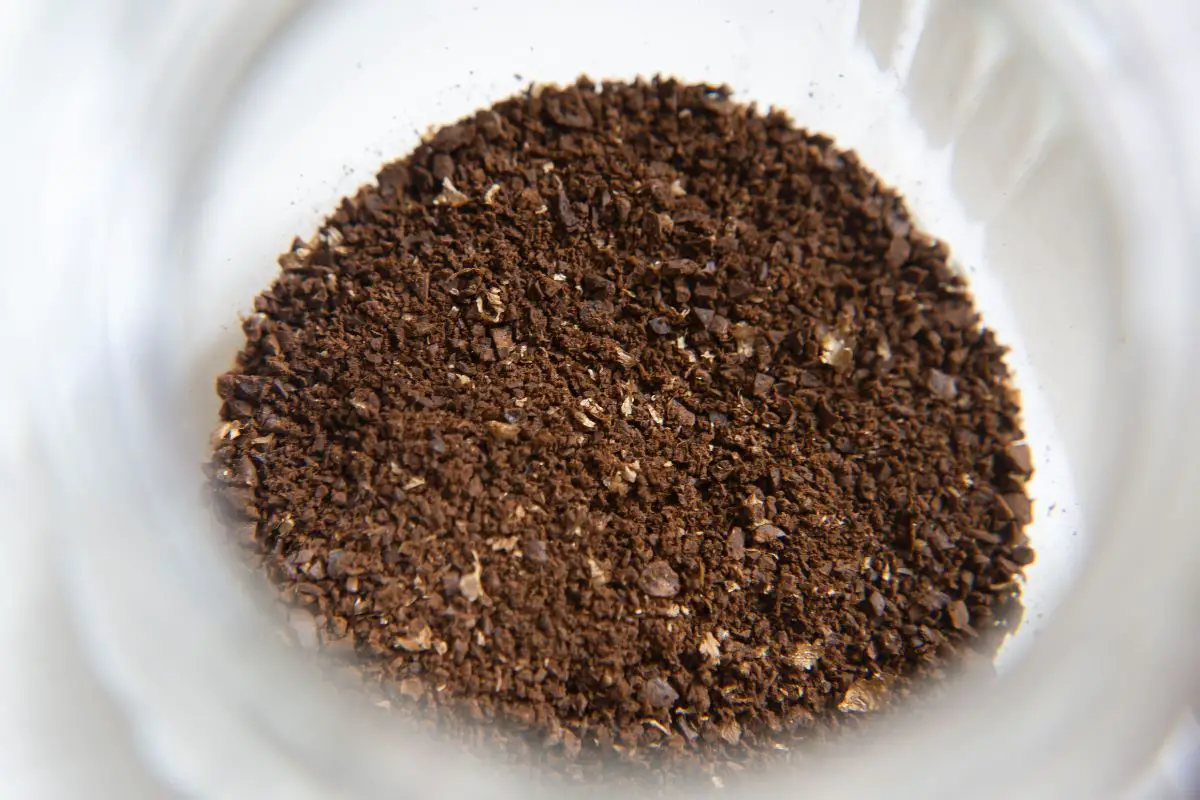
Transitioning from the medium-coarse grind, the medium grind presents a slightly finer texture reminiscent of sand on a beach. This grind size is commonly used in drip coffee makers, pour-over methods, and some espresso machines. The medium grind allows for a balanced extraction, resulting in a flavorful and aromatic cup of coffee.
When coffee beans are ground to a medium grind, they resemble granulated sugar in consistency. This texture allows for a moderate rate of water flow through the coffee bed, ensuring proper extraction without over-extraction. The medium grind size is ideal for drip coffee makers as it allows the water to pass through the coffee at a controlled pace, allowing for a well-balanced flavor profile.
Using a medium grind can also be advantageous for pour-over methods, such as the V60 or Chemex. The slightly finer texture of the grounds allows for a slower extraction compared to a coarser grind, enhancing the clarity and complexity of the flavors in the resulting brew.
Transitioning to the subsequent section about the medium-fine grind, the texture becomes even finer, allowing for a faster extraction and a different flavor profile.
Medium-Fine Grind
The medium-fine grind is an important grind size in the world of coffee brewing. It is particularly well-suited for brewing methods such as the AeroPress and Siphon. This grind size allows for optimal extraction, resulting in a rich and full-bodied flavor in the brewed coffee.
Ideal for AeroPress and Siphon
For both AeroPress and Siphon brewing methods, achieving the ideal grind size is crucial for ensuring optimal extraction and a flavorful cup of coffee. The medium-fine grind is particularly well-suited for these brewing techniques. This grind size falls between medium and fine, offering a balance between extraction and clarity of flavor. In an AeroPress, the medium-fine grind allows for a shorter brew time, resulting in a cleaner cup with pronounced flavors. Similarly, in a Siphon, the medium-fine grind ensures proper extraction without over-extracting the coffee grounds.
To better understand the ideal grind size for AeroPress and Siphon brewing, refer to the following table:
| Brewing Method | Grind Size |
|---|---|
| AeroPress | Medium-Fine |
| Siphon | Medium-Fine |
The medium-fine grind size in both brewing methods produces a rich and full-bodied flavor. This allows coffee enthusiasts to enjoy a well-extracted cup of coffee without compromising on taste and quality.
Produces a Rich and Full-Bodied Flavor
The previous subtopic discussed the ideal coffee grind size for AeroPress and Siphon brewing methods. Now, let us delve into the current subtopic, which focuses on the rich and full-bodied flavor produced by this grind size.
When coffee beans are ground to a coarser size, as is the case with AeroPress and Siphon brewing, the resulting coffee exhibits a robust and well-rounded taste profile. The larger particles allow for a longer extraction time, extracting more of the coffee’s oils and flavors. This leads to a cup of coffee that is bold, flavorful, and satisfyingly rich in mouthfeel.
The full-bodied nature of coffee brewed with this grind size provides a delightful sensory experience, with layers of complex flavors that unfold on the palate. As we move on to discuss the fine grind, we will explore the nuances and characteristics it imparts to the coffee.
Fine Grind
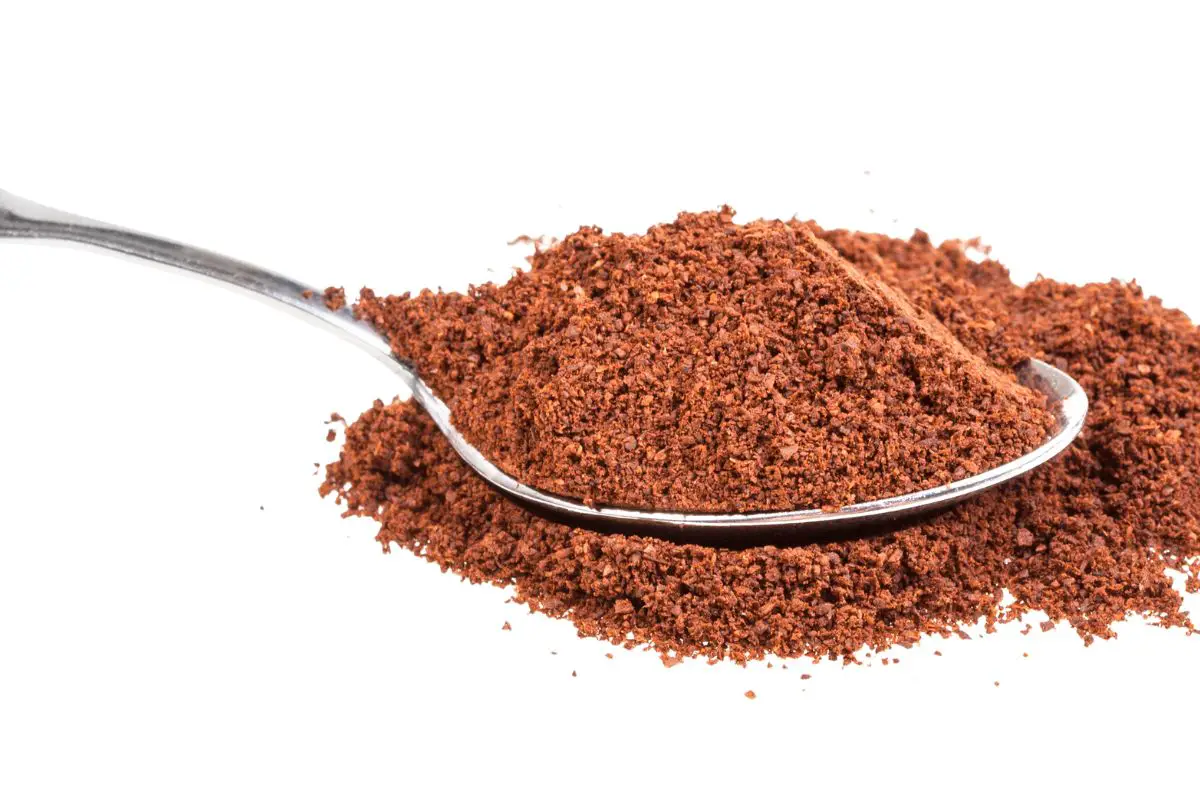
Ground to a consistency resembling powdered sugar, the fine grind is reminiscent of a soft, delicate snowfall. This particular grind size is commonly used for espresso machines, where a shorter brewing time is required. The fine grind allows water to pass through the coffee quickly, resulting in a strong and intense flavor profile. The smaller particle size also increases the extraction rate, extracting more of the coffee’s oils and flavors. As a result, the final cup of coffee produced from a fine grind is characterized by a rich and full-bodied taste.
In terms of safety, it is important to note that the fine grind can be prone to over-extraction if not carefully managed. Over-extraction can lead to a bitter and unpleasant taste in the coffee. It is recommended to closely monitor the brewing time and adjust the grind size accordingly to avoid this. Additionally, using a high-quality burr grinder for a consistent particle size is crucial to achieve the desired flavor and prevent any potential hazards associated with inconsistent grinding.
Transitioning to the next section, the extra-fine grind takes the fineness of the fine grind one step further.
Extra-Fine Grind
With its even smaller particle size, the extra-fine grind allows for even faster water extraction and a more pronounced and intense flavor profile. This grind size is commonly used for Turkish coffee, which is known for its strong and bold taste. The extra-fine grind ensures that the coffee grounds are almost powdery in consistency, resembling flour or powdered sugar.
The benefits of using an extra-fine grind include:
- Increased surface area: The smaller particle size of the coffee grounds exposes a larger surface area to the water, facilitating quicker and more efficient extraction of flavors and aromas.
- Enhanced aroma: The finer grind allows for a more potent release of aromatic compounds, resulting in a more fragrant and enticing cup of coffee.
- Bold and intense flavor: The increased extraction rate of the extra-fine grind leads to a stronger and more concentrated flavor profile, which can be appealing to those who prefer a robust and flavorful brew.
- Thorough filtration: The fine particles of the extra-fine grind are often filtered out by paper filters or specialized brewing equipment, ensuring a clean and sediment-free cup of coffee.
When working with an extra-fine grind, it is important to pay attention to the brewing method and equipment used. Improper brewing techniques or equipment that cannot handle fine particles may result in clogging or over-extraction, potentially affecting the taste and safety of the final brew.
Frequently Asked Questions
What are the recommended brewing methods for each grind size?
The recommended brewing methods for each grind size vary depending on the desired strength and extraction of the coffee. Fine grind is typically used for espresso, medium grind for drip coffee, and coarse grind for French press.
How does the coffee grind size affect the taste of the coffee?
The coffee grind size significantly impacts the taste of the coffee. Finer grinds extract more flavor compounds, resulting in a stronger and more intense brew, while coarser grinds yield a milder taste with less extraction.
Can I use the same grind size for all types of coffee beans?
Using the same grind size for all types of coffee beans may not yield optimal results. Different beans require different grind sizes to extract their unique flavors. It is recommended to adjust the grind size based on the type of coffee bean being used.
Is it possible to adjust the grind size on a coffee grinder?
It is possible to adjust the grind size on a coffee grinder. This allows for customization of the brewing process, ensuring optimal flavor extraction. Experimenting with different grind sizes can enhance the coffee experience and cater to individual preferences.
Are there any specific coffee brands or roasts that work best with each grind size?
Different coffee brands and roasts have different recommended grind sizes. It is important to match the grind size to the brewing method to ensure optimal flavor and safety. Experimenting with different grind sizes can help determine the best match for each coffee.
Conclusion
Coffee grind size plays a crucial role in the flavor and brewing process of coffee. The chart outlines the different grind sizes, from coarse to extra-fine, and their corresponding brewing methods.
Whether you prefer a French press, pour-over, or espresso, understanding the appropriate grind size is essential for achieving the desired taste and extraction.
By using the correct grind size, coffee enthusiasts can unlock the full potential of their beans and indulge in a rich, aromatic cup of coffee that satisfies both the mind and the senses.
Related articles: